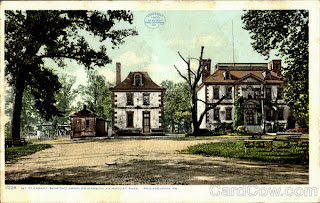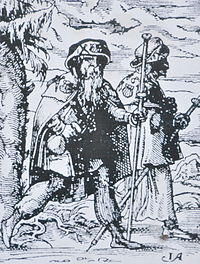Mourning Becomes Her
Deborah Schneider
Warning, this post contains some macabre information and
might not be for the weak of heart. We’re going to talk about death and dying.
I recently attended Steamcon IV, and the theme was Victorian Monsters. There
were a lot of workshops on subjects such as ghosts, spiritualists and Victorian
mourning fashion and mementos.
Death is a topic the average American avoids, postponing any
thought of their demise as if they plan to live forever. Yet the Angel of Death
will descend upon us – sooner or later. We’re all going to die, it’s just a
matter of timing.
The Victorians had a closer relationship with death, because
it was a constant factor in their lives. Poor hygiene, questionable medical
procedures, the danger of infection, and infectious diseases all contributed to
an average life expectancy of 42 years. The people of this era didn’t fear
death, but they were afraid they would not be properly mourned when they
passed.
So, an elaborate structure of mourning customs developed
during this era, inspired in part by Queen Victoria, when she went into mourning for
her beloved Prince Albert.
The rules dictating fashion requirements and social
activities were strictest for a widow. She was expected to follow prescribed
rules for dressing, conducting herself and publicly displaying her deep sense
of loss.
There were specific stages of mourning; beginning with deep
(or full) mourning immediately following her husband’s death. It was to last a
year and a day, and she was expected to dress entirely in black during that
period. She also was expected to limit her social activities with the exception
of church attendance.
Full mourning required a wardrobe of black crepe, wool or
other dull fabric that did not reflect any light. All her accessories were
black, including her gloves, stockings, hats and parasols. This attire was
often referred to as “widow’s weeds”. The one exception to the rule of black
was undergarments since the dyes were unstable and could stain skin. Many women
sewed a large black band on their white petticoats, in the event that her skirt
lifted, not even a hint of white should show. Women were also required to wear
a bonnet with a “weeping veil”, which was made of sheer crepe or silk and would
reach to mid-calf. When out in public, the widow was expected to use the veil
to cover her face.
During deep mourning a widow didn’t wear jewelry, but after
the year and one day, she proceeded into half-mourning. At that point she could
begin wearing mourning jewelry, especially black jet or hair jewelry. This is
the macabre part, because hair jewelry was made from the deceased’s hair, woven
into pins, pendants or other jewelry.
Half-mourning allowed for gradually easing into wearing
other colors: grey, mauve, purple, lavender, lilac and white could be worn. In
the late 1800’s, burgundy and subtle prints began to become popular as
half-mourning alternatives.
In my book, Promise Me,
Amanda Wainwright is the widow of a wealthy man. She arrives in Willow Creek Montana
on a mission to fulfill a deathbed promise to her husband.
“Mud.”
Amanda Wainwright sighed deeply as she gazed out the carriage window. “This
whole town is brown and gray and covered in mud.”
She was alone in the carriage, so no one
answered her. Lately, she’d taken to talking to herself to fill in the blanks
and alleviate the loneliness. People might think her a bit daft, or maybe
eccentric, if they heard her. Rich widows were allowed to be eccentric, weren’t
they?
She touched the black veiling on the hat
perched next to her. She hated widow’s weeds; each glimpse of herself reminded
her she was completely and utterly alone.
Amanda took a deep breath; she needed to
prepare herself for the days ahead. She still felt inadequate for the task
Arthur had charged to her upon his deathbed. Her dying husband had begged her
to make things right for the workers who had sacrificed so much of their lives
to make him a rich man. The sour stench of sickness and death had hung over him
when he’d extracted the promise from her. She’d vowed to create the Miner’s
Benevolent Association for the workforce in his mines.
She twisted
her black gloved hands nervously and sighed. It seemed an impossible task.
She’d never had any responsibility other than directing servants and being an
obedient daughter and wife. What did she know of miners and their problems?
The carriage halted, and Amanda stretched
the muscles that had cramped on the long trip into the mountains. Snatching the
despised hat, she set it upon her head and spread the heavy veiling across her
shoulders to shield her face. The door opened and her driver nodded to her
politely.
“We’re here, ma’am.”
Amanda wrapped the ribbons of her black,
beaded bag around her thin wrist and held out a gloved hand. The man assisted
her to the ground, and mud oozed over the toes of her boots. Lifting the hem of
her bombazine gown, she walked to the steps and into the Parmeter House.
Amanda stood at the polished wood counter and
waited patiently. A few minutes passed before a tall woman in a dark gray dress
bustled out a doorway and paused to give Amanda a warm smile.
“Land sakes, you must be the Widder
Wainwright.”
Amanda’s face grew hot. She hated being
identified as the surviving mate of a dead man.
For more about Promise Me, visit www.debschneider.com
.jpg)













